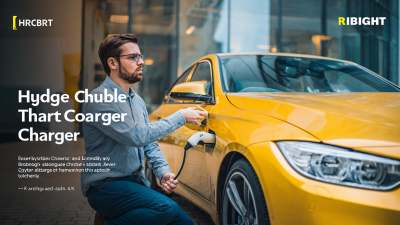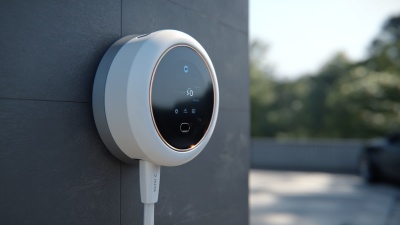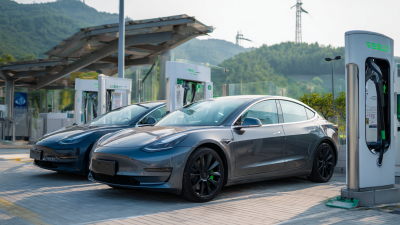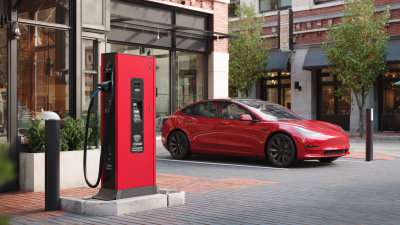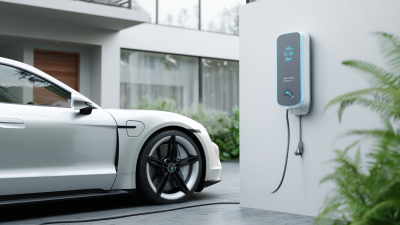As electric vehicle (EV) adoption continues to surge, the need for convenient and efficient charging solutions has never been more critical. According to a report by the International Energy Agency (IEA), global electric car sales reached 6.6 million in 2021, underscoring the growing demand for accessible charging infrastructure. A well-planned Home Car Charging Point not only enhances the convenience of owning an EV but also significantly contributes to the overall charging ecosystem.

By installing a charging station at home, EV owners can take advantage of off-peak electricity rates, reduce reliance on public charging networks, and ensure that their vehicles are ready for use at all times. Moreover, with advancements in charging technology and the increasing availability of renewable energy sources, setting up a home charging point has become more practical than ever, making it a crucial consideration for both current and prospective EV owners.
Setting up a home charging point for electric vehicles (EVs) is a vital consideration for EV owners. Understanding the basics of home charging points begins with knowing the types of chargers available.
The two most common options are Level 1 and Level 2 chargers. A Level 1 charger typically uses a standard 120-volt outlet, making it accessible for most households, but it offers slower charging speeds. In contrast, a Level 2 charger operates on a 240-volt system, providing a more efficient charging experience, ideal for overnight charging.
When selecting a charging point, it is also important to consider your home’s electrical infrastructure. You may need to upgrade your electrical panel or wiring to accommodate a Level 2 charger effectively. Additionally, think about the location of the charger for ease of access and safety. Proper installation is crucial; employing a qualified electrician ensures compliance with local electrical codes and maximizes the safety and efficiency of your charging station. By understanding these essentials, homeowners can create a convenient and effective charging solution for their electric vehicles.
Electric vehicle (EV) chargers come in different types, each offering unique benefits to cater to various charging needs. The three main categories are Level 1, Level 2, and DC Fast Charging. Level 1 chargers use standard 120-volt outlets and are ideal for home use, providing a slow charge that is best for overnight charging. Level 2 chargers, on the other hand, require a dedicated 240-volt outlet, enabling faster charging and making them suitable for both home installation and public charging stations. Finally, DC Fast Chargers are the fastest option, providing an impressive amount of power for quick charging, mostly found at commercial locations for those on long trips.
When setting up a home charging point, consider your daily driving habits and the potential for future needs. It’s essential to assess the power output and charging speed that best suits your lifestyle. For instance, if you commute daily, a Level 2 charger may be more practical.
Tips: Always consult a professional to install your charging station to ensure it meets local electrical codes. Additionally, consider the installation costs which can vary, but investing in a high-quality unit can improve your charging experience. Lastly, keep an eye on charger networks expanding in your area to take advantage of public fast charging opportunities as they become available.
When considering the installation of a home car charging point for electric vehicles, several key factors must be taken into account to ensure a safe and efficient setup. First, the rapidly growing market for EV chargers, projected to expand from $761.7 million in 2025 to $3.5 billion by 2032 at a compound annual growth rate (CAGR) of 24.3%, highlights the increasing importance of home charging infrastructure. This trend signals that not only is the adoption of electric vehicles rising, but also that homeowners have a crucial role to play in developing the necessary charging capabilities.
In addition to market growth, potential users must adhere to essential safety guidelines during installation. Experts recommend key measures, such as integrating a fuse board for electrical safety and ensuring proper ventilation around the charging station. Ignoring these aspects can lead to serious hazards, affecting both the vehicle and household. As the demand for home charging solutions continues to surge, especially among those living in urban environments or in apartment complexes, understanding these critical factors is more important than ever for a safe and effective EV charging experience.

When deciding to install a home car charging point for electric vehicles, one crucial aspect to consider is whether to take the DIY route or hire a professional. While embarking on a DIY installation may seem cost-effective, it requires a solid understanding of electrical systems and local codes. According to a report by the U.S. Department of Energy, improper installation can lead to safety hazards and may even void the warranty on your charging station. As many as 60% of homeowners are unaware of the necessary permits and inspections required for compliance, highlighting the importance of consulting local regulations before starting any work.
On the other hand, opting for professional help can significantly streamline the installation process. A study by the National Renewable Energy Laboratory reveals that professional installations are not only safer but often more efficient, reducing installation time by 30% on average. Professionals can provide valuable insights into the best location for the charger, ensuring optimal performance and convenience. Furthermore, they are equipped to handle any unforeseen complications, such as the need for electrical upgrades, providing peace of mind for homeowners venturing into the EV charging landscape.
When setting up a home car charging point for electric vehicles (EVs), choosing the right location and equipment is crucial for optimal charging efficiency. According to a study by the International Energy Agency (IEA), the optimal location for a charging station is away from any direct obstructions and in close proximity to the main electrical panel. This reduces the length of cabling required, which in turn minimizes energy loss during the charging process. Additionally, placing the charger in a shaded area can help keep the equipment cooler, enhancing its efficiency and prolonging its lifespan.
Selecting the appropriate charging equipment is equally important. Level 2 home charging stations, which typically operate at 240 volts, can charge a standard EV in 4 to 6 hours, considerably faster than a standard 120-volt Level 1 charger, which may take a full day. The U.S. Department of Energy reports that residential charging infrastructure has shown a significant increase, with a 35% growth in EV home charging point installations from 2019 to 2022. As EV adoption continues to rise, investing in reliable and efficient charging equipment at the right location will ensure that homeowners can maximize their EV experience while minimizing energy costs.

